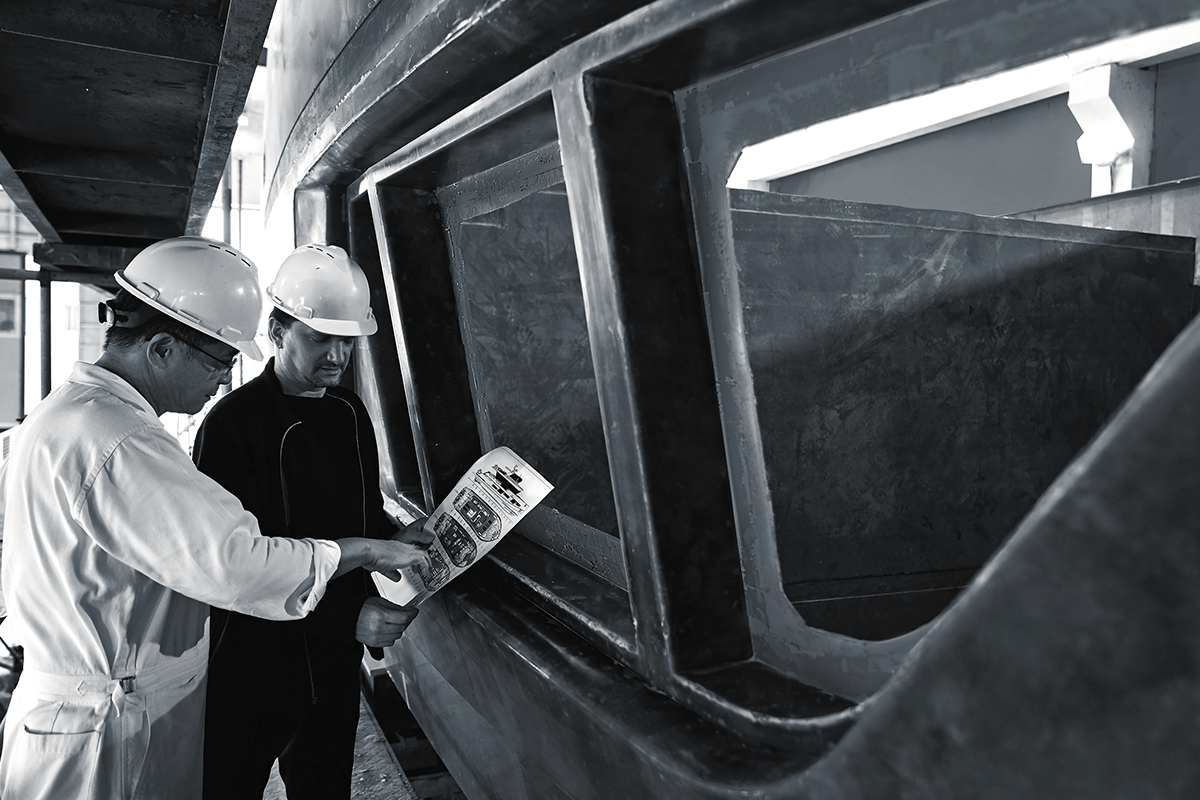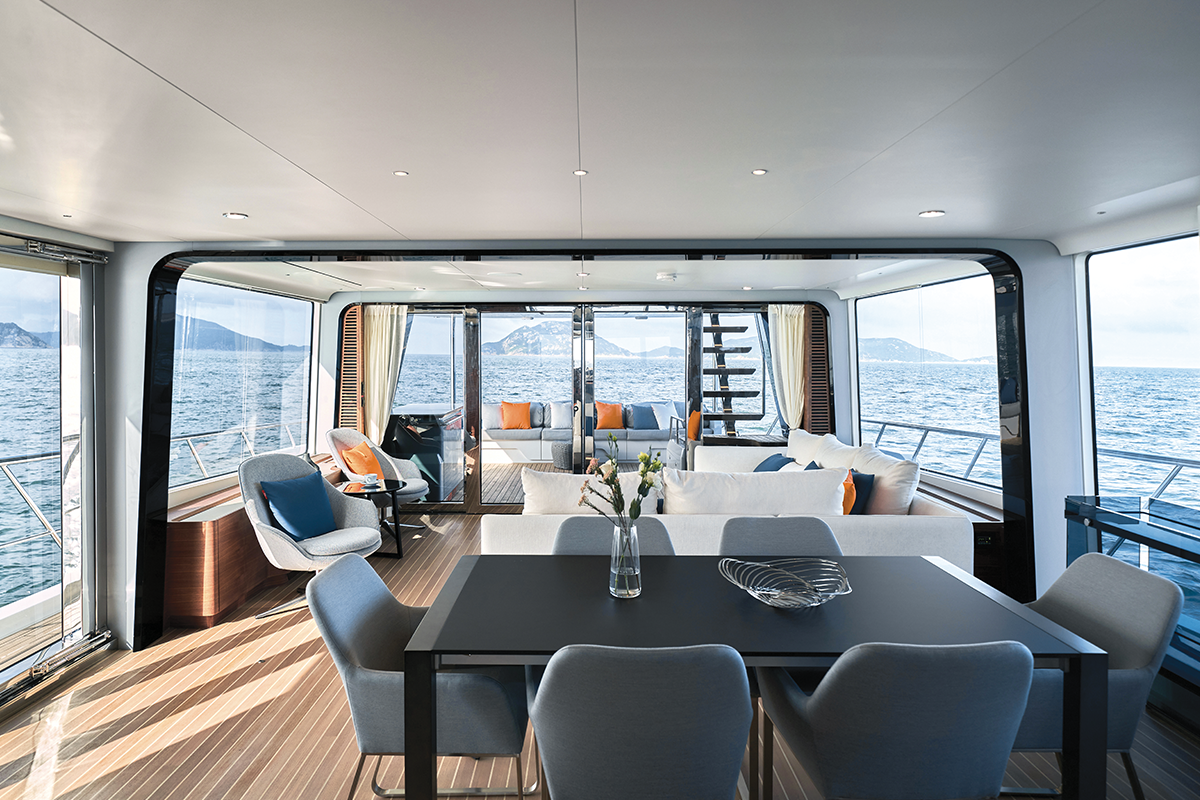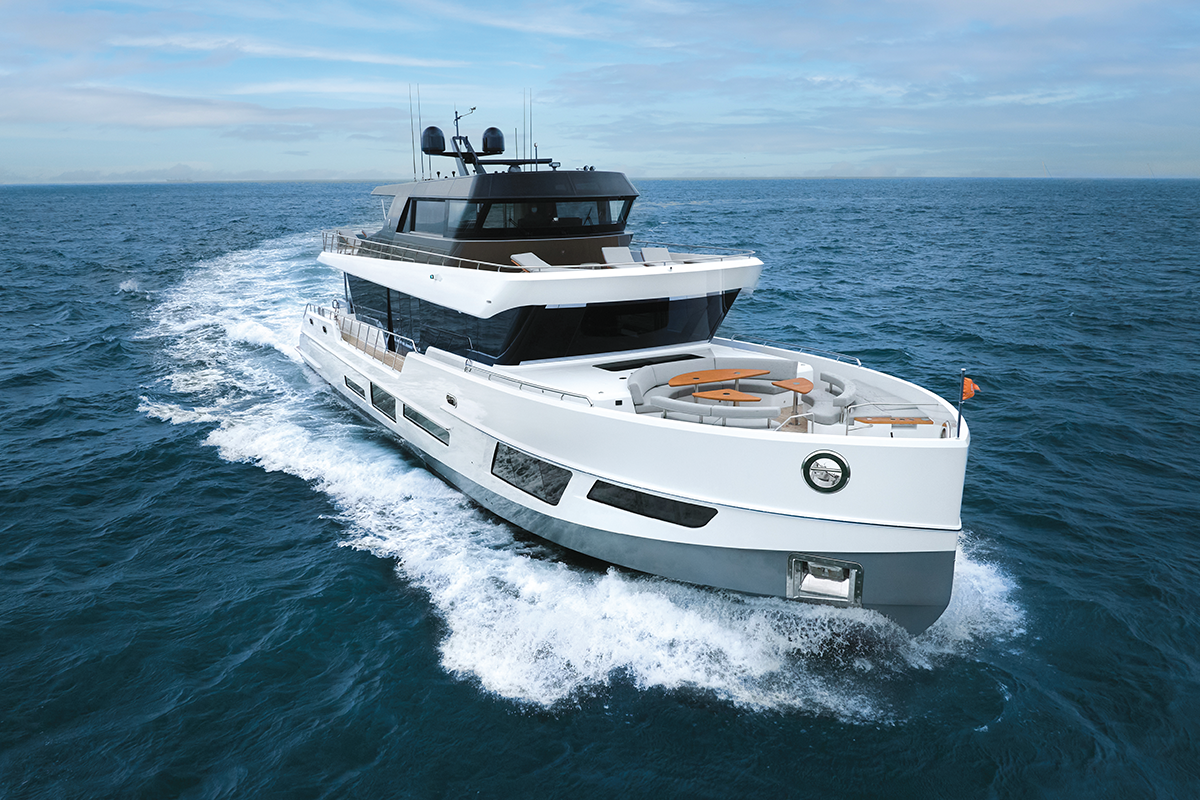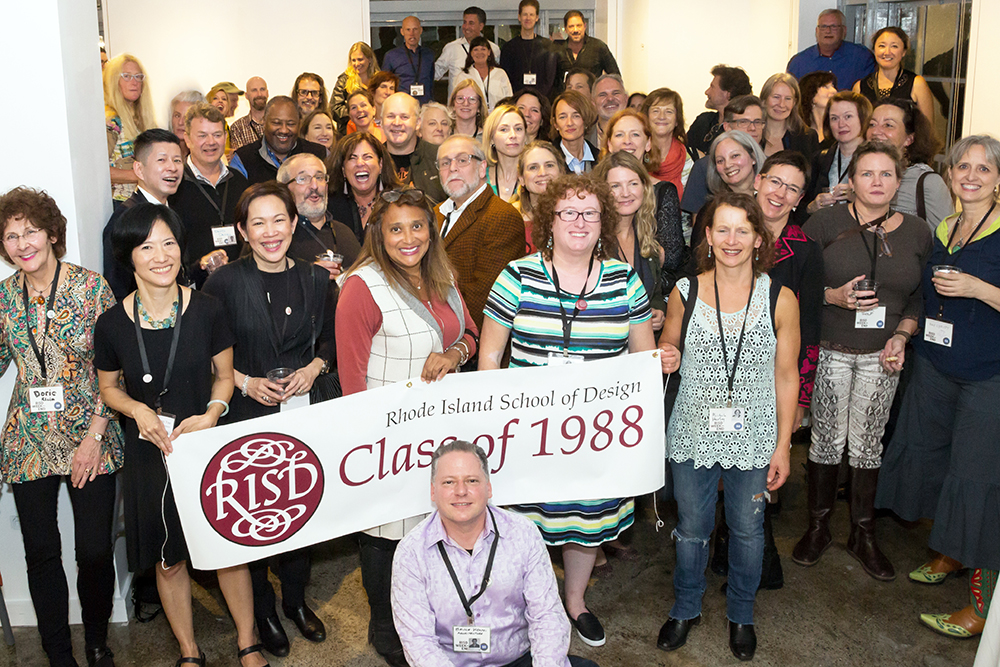
Sail Away
Martin Lo and Jozeph Forakis create a new style of yachts.
Martin Lo BID 84 and Jozeph Forakis 85 ID were acquaintances rather than close friends back in their undergraduate days at RISD. But in the tight-knit Industrial Design Department of the 1980s, proximity meant that everybody knew one another to some degree; they all labored into the late hours in close quarters.
“It was kind of this covert operation tucked away in the basement of an architecture building,” Forakis said.
The two stayed loosely in touch after graduating, as Lo took over leadership of his fourth-generation family business, Cheoy Lee Shipyards, and Forakis built a reputation as an inventive, globe-trotting designer of products ranging from cell phones to plane interiors, and started his own design company, jozeph forakis ... design, located in Milan, Italy. They reconnected in earnest about a decade ago via Facebook and began meeting up when traveling into each other’s orbits.
“It’s always great rekindling with RISD people, because it’s such a magic period,” Forakis said. “Meeting ‘risdoids’ of any stripe is always a great opportunity.” In this case, the reconnection was especially fruitful: Lo wanted to overhaul Cheoy Lee’s yacht division, then called Cheoy Lee Yachts, with a brand revamp and innovative new offerings, and he decided to ask Forakis to help him do it, even though Forakis’s long design résumé did not include any boats.
“I decided, why don’t I give Jozeph a try?” Lo said. “I needed a fresh approach.”
Forakis was on board, so to speak.
“Designing a yacht was on my very, very short list of dream projects,” he said, and “if you know industrial design, you can design anything.”
A Rich History
Bringing in such an unconventional pick was a coura-geous departure from tradition for Lo, who has been working in the family business since graduating from RISD. Cheoy Lee Shipyards, a 150-year-old company with building operations based in mainland China and administrative offices in nearby Hong Kong, has long enjoyed a global reputation for designing and building quality workhorse boats: tugboats, ferries, catamarans.
The company was rebuilt from scratch twice, Lo said, during the years of Japanese aggression and occupation in the Sino-Japanese War of World War II. The company branched into international operations in the early 1950s with a United Nations commission to build fishing boats to help revitalize the South Korean economy after the Korean War. Cheoy Lee first dipped a toe into yacht building with a commission in 1957, the Mah Jong, a 52-foot teak boat that, after a 2017 restoration, remains seaworthy today.
In the 1960s, the company began building yachts out of fiberglass, innovating to the point where, in the ’80s, shipbuilding quality standard-bearer Lloyd’s Register asked the company to help draft standards for the production of large fiberglass boats.
“They literally created the standards,” Forakis said.
Cheoy Lee continued building innovative work and pleasure boats throughout the following decades, innovating in fiberglass, aluminum, and alloys. But as the 21st century wound on, the company reached a stasis.
“The management spent time at the Fort Lauderdale show in late 2016 and looked at our yachts compared to others’ and realized we had an image problem. We were just getting stale,” Lo told Yacht Style in 2022.
Lo reached out to Forakis in 2017.
“My objective was to look at the company holistically—and look at our products holistically—and come up with a design proposal,” Lo said. He trusted his friend’s sensibility and skills to keep company tradition in mind while creating its next incarnation.

Reimagining Luxury
Once the two companies decided to collaborate, it was time for Forakis and his team to take a crash course on building boats.
“I don’t think it’s possible to have a better client when you’ve pretty much got to learn everything that goes into making a boat,” Forakis said. “You can say there’s no such thing as a dumb question, but some of the questions we asked or ideas we brought up—now I know how left-field or ridiculous they were,” Forakis added. “Martin never lost his cool.”
Beyond nuts and bolts, ongoing dialogue led by two industrial designers quickly became a much broader philosophical inquiry into the nature of leisure. “What started off as a very high-level conversation about the possibility of designing a yacht or thinking about the future of yacht design kind of expanded into this more global discussion about the future of yachting experiences in general,” Forakis recalls. “What is luxury? In RISD, you’re taught to frame the problem before you go about problem-solving.”
Lo noted that their common educational background allowed him to foster effective communication between Hong Kong and Milan, Forakis’s professional home base. “I have a design background but I’m working at the yard, so I become the bridge between the company and the designer,” Lo said.
The weekly discussions, sometimes lasting up to six hours, led Forakis and his team into a deep dive into Cheoy Lee Yachts’ existing processes, branding, and company culture. That work culminated in seven design concepts, offering what Forakis called “various degrees of radical,” that his design firm submitted to Lo and his team. The concepts spanned from one that could be built with existing infrastructure to more-unconventional designs that would require reimagining the company’s entire production process. Lo and his team selected one of the less conventional designs, later named CLX96, which considered both “the tradition of the company and the trend of the yacht market,” Lo said.
But when it became clear that testing the limits meant the product would take a substantial amount of time to develop, they also started work on what became the less extreme CLB88, an 88-footer with a maximum speed of about 25 knots, which entered the market in 2020.


The boundary-pushing CLX96, which debuted in 2022, is rooted in an openness to nature, showcasing the vision that Forakis’s team brought to the project. Forakis said he wanted the yacht to truly feel like a part of the environment rather than a house that happened to be floating. The boat, which is nearly 97 feet long and can reach up to 25 knots fully stocked, features visual continuity with the outdoors, in aesthetic touches like cohesive flooring, and an engineering ingenuity that allows for thinner-than-usual support and wiring columns, creating panoramic views.
“You always feel connected with the outdoors,” Forakis said. “There’s a saying in nautical circles: ‘When you’re out at sea, the boat gets one foot shorter every day.’ We were conscious of not just creating as much space as possible but [providing] discrete spaces all around the boat where people can be alone or seamlessly interact.”
The team’s painstaking attention to detail paid off.
“The 96 has won a good design award and an international boats and aviation design award,” Lo said. “It has won design accolades. People are in awe of the design and the built quality of the boats.”
The collaboration shows no sign of winding down. In addition to innovative yacht design, Forakis’s team helped Cheoy Lee rebrand the company’s yacht division, shortening Cheoy Lee Yachts to CL Yachts and updating the logo. And the boat designs keep coming: This year, the duo debuted a third model, the CLB80, and a fourth is under development.
“Martin and I became really close throughout the process,” Forakis said. “We had differences in background experiences and cultures, but the commonality we always kept coming back to was the connection with RISD. Our thinking principles—our design principles—were really evident as a strong foundation.”

Words: Kira Goldenberg



